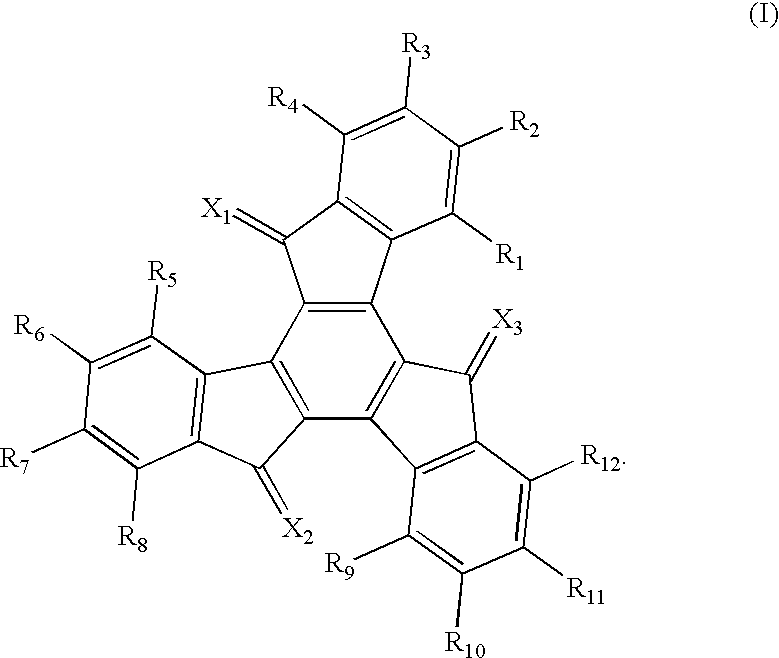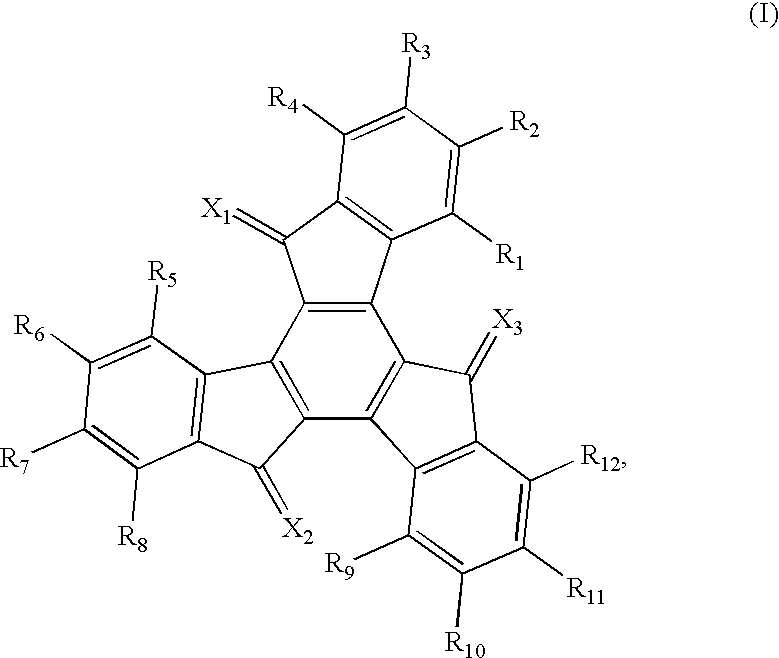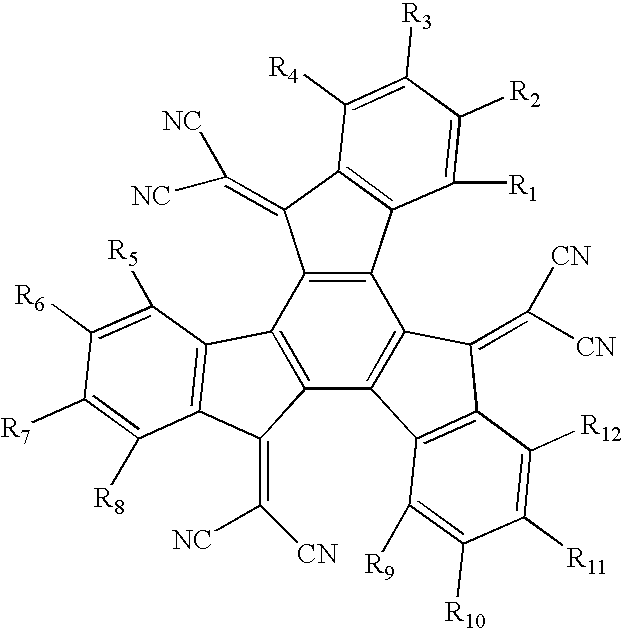Organic luminescence device
a luminescence device and organic technology, applied in the field of organic luminescence devices, can solve the problems of insufficient luminescence efficiency, change in luminance, emission luminance and durability, and accompanied by durability
- Summary
- Abstract
- Description
- Claims
- Application Information
AI Technical Summary
Benefits of technology
Problems solved by technology
Method used
Image
Examples
examples 2-15
[0084] Organic luminescence devices were prepared and evaluated in the same manner as in Example 1 except that the fused polynuclear compound (Ex. Comp. No. 1) was changed to those (Ex. Comp. Nos. 4, 8, 10, 13, 16, 18, 20, 23, 24, 26, 28, 32, 34 and 35), respectively.
[0085] The results are shown in Table 1.
example 16
[0094] An organic luminescence device shown in FIG. 3 was prepared in the following manner.
[0095] In a similar manner as in Example 1, a transparent electroconductive support was prepared.
[0096] On the transparent electroconductive support, a 40 nm-thick hole transport layer 5 of a compound shown below was formed by vacuum deposition. 19
[0097] On the hole transport layer 5, a 20 nm-thick luminescence layer 3 of a compound shown below was formed by vacuum deposition. 20
[0098] On the luminescence layer 3, a 40 nm-thick electron transport layer 6 of a fused polynuclear compound (Ex. Comp. No. 2) was formed by vacuum deposition (1.0.times.10.sup.-4 Pa;0.2-0.3 nm / sec).
[0099] Then, on the electron transport layer 6, a 150 nm-thick metal electrode (cathode 4) of an aluminum-lithium alloy (Li content: 1 atomic %) was formed by vacuum deposition (1.0.times.10.sup.-4 Pa;1.0-1.2 nm / sec).
[0100] To the thus-prepared organic luminescence device as shown in FIG. 3, a DC voltage of 8 volts was appl...
examples 17-30
[0102] Organic luminescence devices were prepared and evaluated in the same manner as in Example 16 except that the fused polynuclear compound (Ex. Comp. No. 2) was changed to those (Ex. Comp. Nos. 6, 9, 12, 15, 17, 19, 21, 22, 25, 27, 29, 30, 31 and 33), respectively.
[0103] The results are shown in Table 3.
PUM
| Property | Measurement | Unit |
|---|---|---|
| thickness | aaaaa | aaaaa |
| thickness | aaaaa | aaaaa |
| luminance | aaaaa | aaaaa |
Abstract
Description
Claims
Application Information
 Login to View More
Login to View More - R&D
- Intellectual Property
- Life Sciences
- Materials
- Tech Scout
- Unparalleled Data Quality
- Higher Quality Content
- 60% Fewer Hallucinations
Browse by: Latest US Patents, China's latest patents, Technical Efficacy Thesaurus, Application Domain, Technology Topic, Popular Technical Reports.
© 2025 PatSnap. All rights reserved.Legal|Privacy policy|Modern Slavery Act Transparency Statement|Sitemap|About US| Contact US: help@patsnap.com



